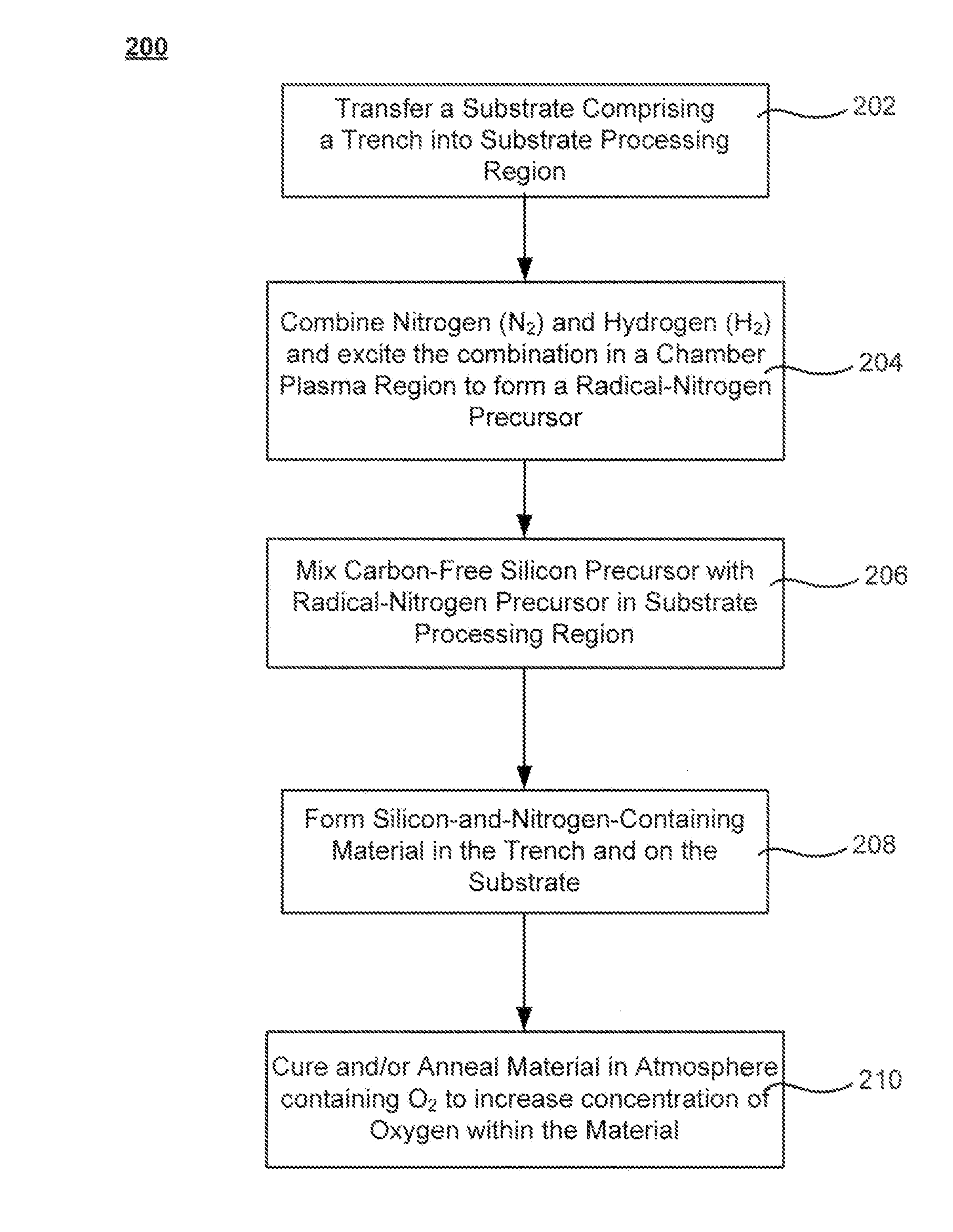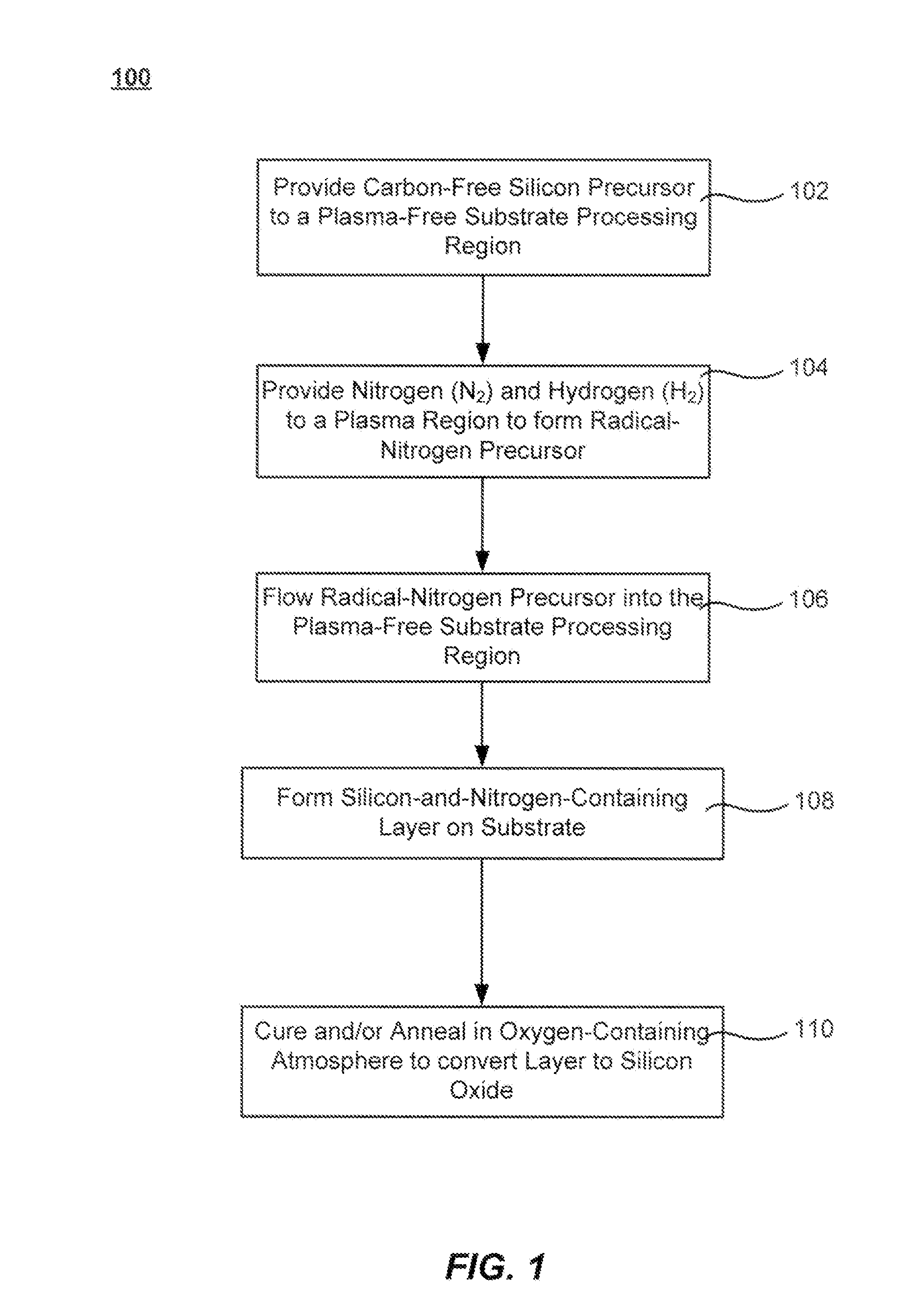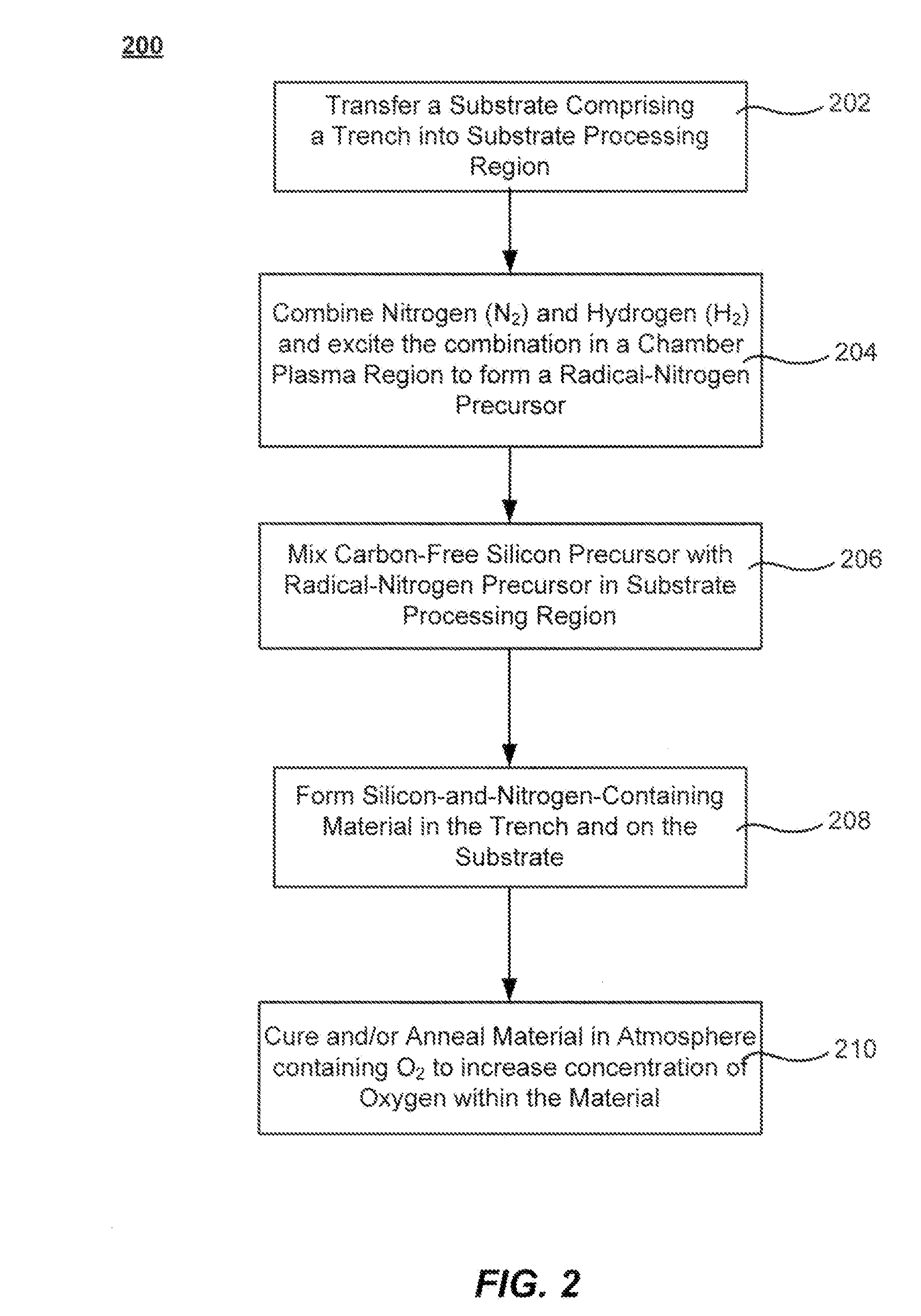Dielectric film growth with radicals produced using flexible nitrogen/hydrogen ratio
a technology of dielectric film and nitrogen, which is applied in the direction of electric discharge tubes, coatings, chemical vapor deposition coatings, etc., can solve the problems of dielectric material, dielectric material, and structural features of the device having decreased spatial dimensions, and achieves the effect of greater flexibility
- Summary
- Abstract
- Description
- Claims
- Application Information
AI Technical Summary
Benefits of technology
Problems solved by technology
Method used
Image
Examples
Embodiment Construction
[0015]Methods of forming dielectric layers are described. The method may include the steps of mixing a silicon-containing precursor with a radical-nitrogen precursor, and depositing a dielectric layer on a substrate. The radical-nitrogen precursor is formed in a remote plasma by flowing hydrogen (H2) and nitrogen (N2) into the plasma in order to allow adjustment of the nitrogen / hydrogen ratio. The dielectric layer is initially a silicon-and-nitrogen-containing layer which may be converted to a silicon-and-oxygen-containing layer by curing and / or annealing the film in an oxygen-containing environment.
[0016]Increasing the concentration of nitrogen used to form the radical-nitrogen precursor reduces nascent flowability but generally produces a higher film quality (e.g. higher density, less shrinkage). On the other hand, decreasing the concentration of nitrogen increases the nascent flowability during deposition at the expense of film quality. Following the deposition, the silicon-and-n...
PUM
| Property | Measurement | Unit |
|---|---|---|
| temperature | aaaaa | aaaaa |
| temperature | aaaaa | aaaaa |
| width | aaaaa | aaaaa |
Abstract
Description
Claims
Application Information
 Login to View More
Login to View More - R&D
- Intellectual Property
- Life Sciences
- Materials
- Tech Scout
- Unparalleled Data Quality
- Higher Quality Content
- 60% Fewer Hallucinations
Browse by: Latest US Patents, China's latest patents, Technical Efficacy Thesaurus, Application Domain, Technology Topic, Popular Technical Reports.
© 2025 PatSnap. All rights reserved.Legal|Privacy policy|Modern Slavery Act Transparency Statement|Sitemap|About US| Contact US: help@patsnap.com



